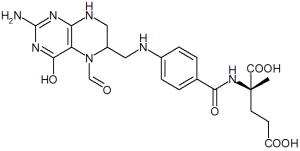Solifenacin was approved for the treatment of overactive bladder (OAB) with symptoms of urge urinary incontinence, urgency, and urinary frequency.
Dosage. The recommended dose of solifenacin is 5 mg/d. The dose may be increased to 10 mg/d if the 5-mg dose is well tolerated. In patients with severe renal impairment (CLCR <30 mL/min) or moderate hepatic impairment (Child-Pugh B), a daily dose >5 mg is not recommended. The daily dose of solifenacin should not exceed 5 mg if the drug is administered concomitantly with therapeutic doses of ketoconazole or other potent CYP3A4 inhibitors.
Geriatric dosage adjustments. None recommended.
Pharmacokinetics. A competitive muscarinic receptor antagonist, solifenacin exerts its effect on the contraction of urinary bladder smooth muscle.
Safety. Solifenacin is contraindicated in patients with urinary retention, gastric retention, and uncontrolled narrow-angle glaucoma.
Solifenacin should be used with caution in patients being treated for narrow-angle glaucoma. Solifenacin should be used with caution in patients with reduced renal and hepatic function, as well as in patients with decreased gastrointestinal motility.
Adverse events. Common adverse events associated with antimuscarinic agents include dry mouth, constipation, blurred vision (accommodation abnormalities), urinary retention, and dry eyes. The most common adverse events associated with solifenacin--dry mouth and constipation--appear to be dose-related, with a greater incidence associated with the 10-mg dose versus the 5-mg dose.
New formulations, indications
* New formulation: A new, orally disintegrating formulation of donepezil (Aricept ODT, Eisai) to treat the symptoms of mild-to-moderate Alzheimer's disease.
* New formulation: Lanthanum carbonate chewable tablets (Fosrenol, Shire) to treat hyperphosphatemia in patients with end-stage renal disease (ESRD).
* Expanded indication: Oxaliplatin (Eloxatin, Sanofi-Aventis) to include use in combination with infusional 5-fluorouracil/leucovorin for the adjuvant treatment of patients with stage III colon cancer who have undergone complete resection of the primary tumor.
* New formulation: Once-daily oral solution (25 mg/mL) of levofloxacin (Levaquin, Ortho-McNeil) to treat infection caused by various pathogens.
* New formulation: Fenofibrate (TriCor, Abbott) to be taken with or without food. The new formulation dissolves more quickly and completely in the gastrointestinal tract. The new formulation's doses of 48 and 145 mg will replace the previous formulation's 54- and 160-mg doses.
* Expanded indication: Letrozole (Femara, Novartis) was expanded to include the extended adjuvant treatment of postmenopausal women with early breast cancer who have received adjuvant (eg, post-surgery) tamoxifen therapy for 5 years.
Labeling updates
* Valdecoxib (Bextra, Pfizer) includes a warning of the risk of a rare but serious skin reaction that may occur in patients receiving the drug, mainly within the first 2 weeks of therapy. The label also notes new data about increased cardiovascular events in patients undergoing coronary artery bypass graft (CABG) surgery (including MI, stroke, deep vein thrombosis, and pulmonary embolism).
* Warnings regarding reports of anaphylaxis and hematologic events such as cytopenia and pancytopenia with adalimumab (Humira, Abbott), including serious infections in patients receiving concomitant anakinra with another TNF inhibitor similar to adalimumab.
* Warnings of increased risks of QTc prolongation and torsades de pointes in geriatric patients and rhabdomyolysis in the general patient population for levofloxacin (Levaquin, Ortho-McNeil).
* Epoetin alfa (Procrit, Johnson & Johnson) should be discontinued once the patient's hemoglobin level reaches 13 g/dL (target level 12 g/dL, with a range of 12 to 18 g/dL).
COPYRIGHT 2005 Advanstar Communications, Inc.
COPYRIGHT 2005 Gale Group



